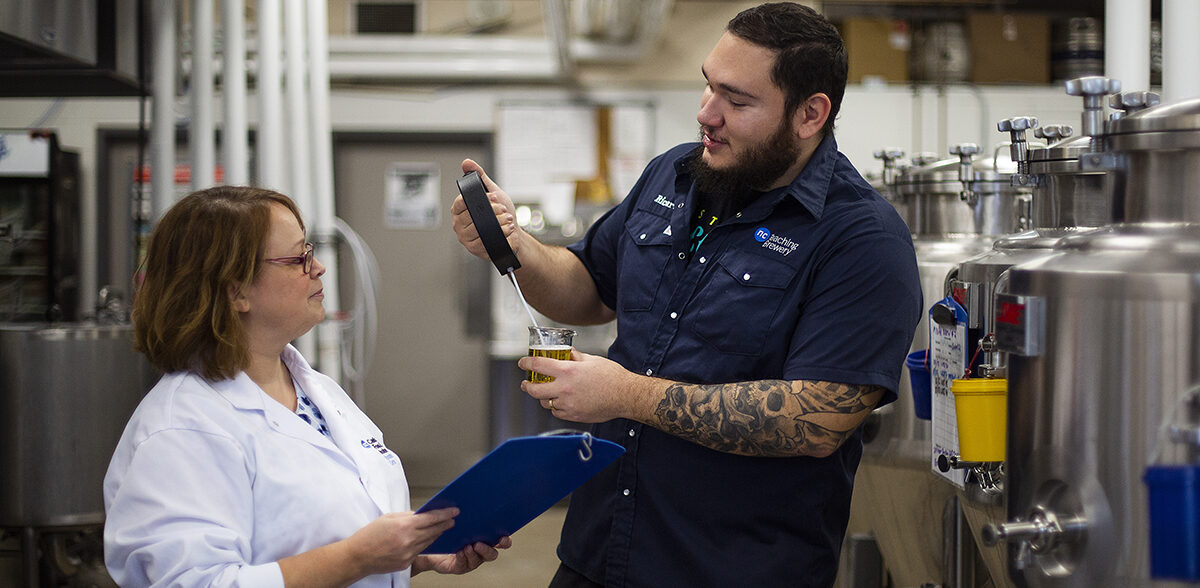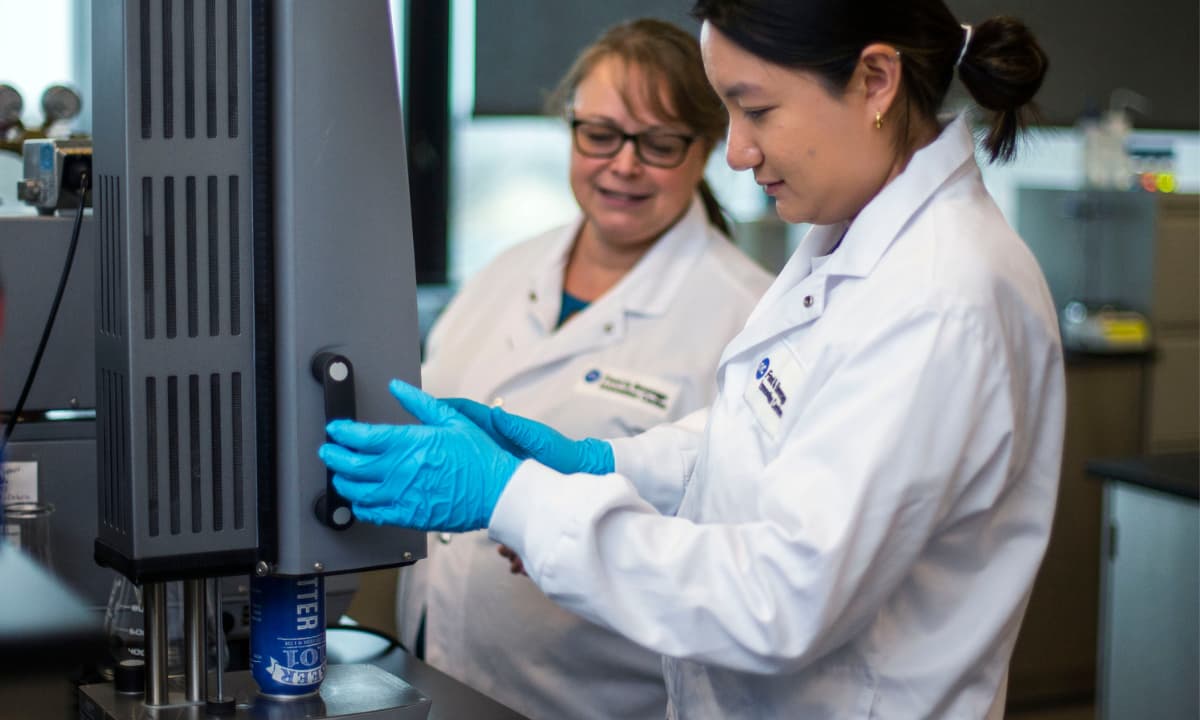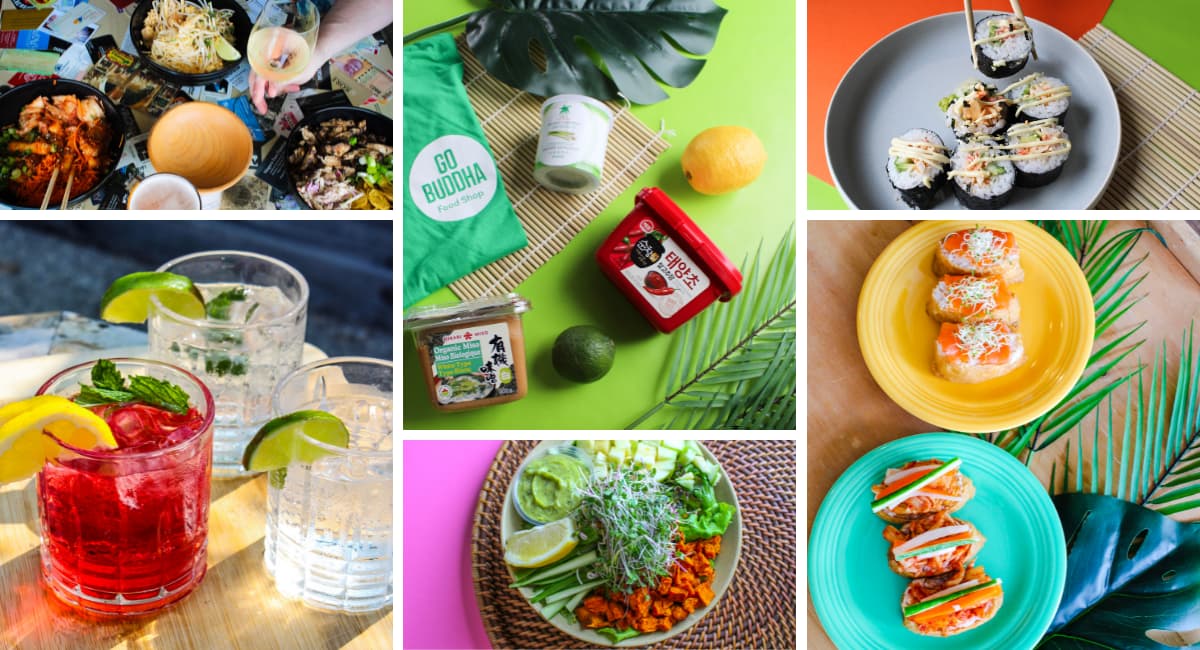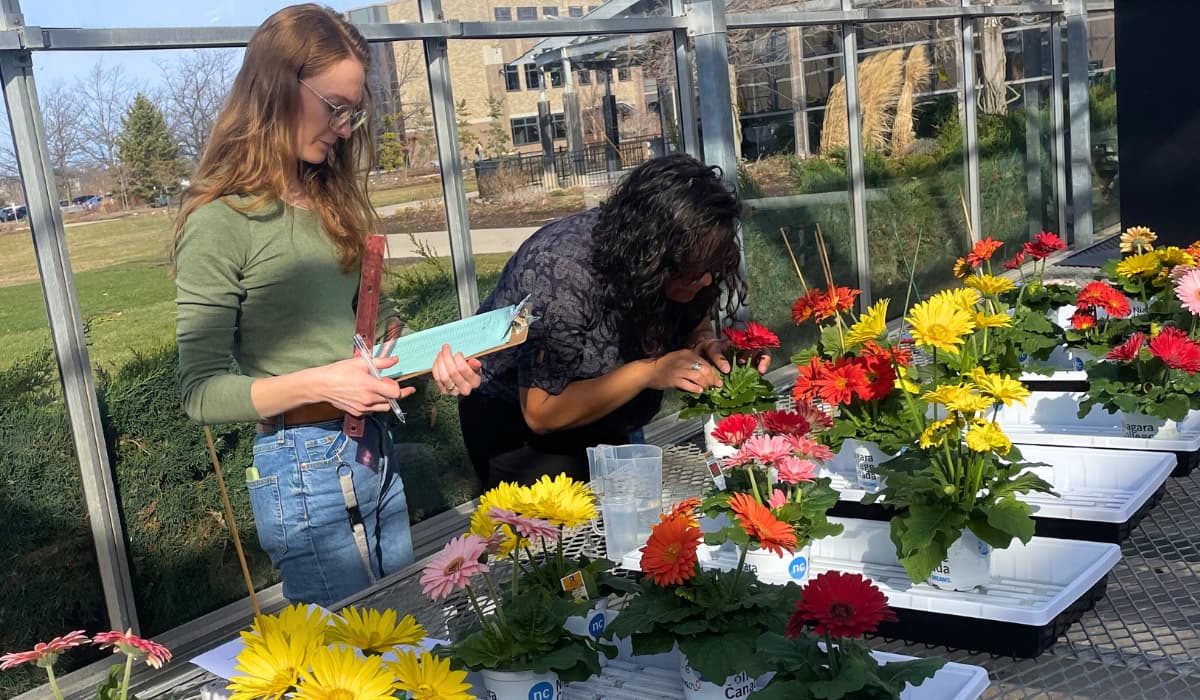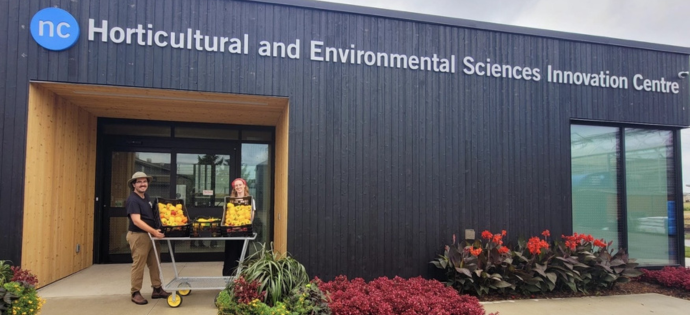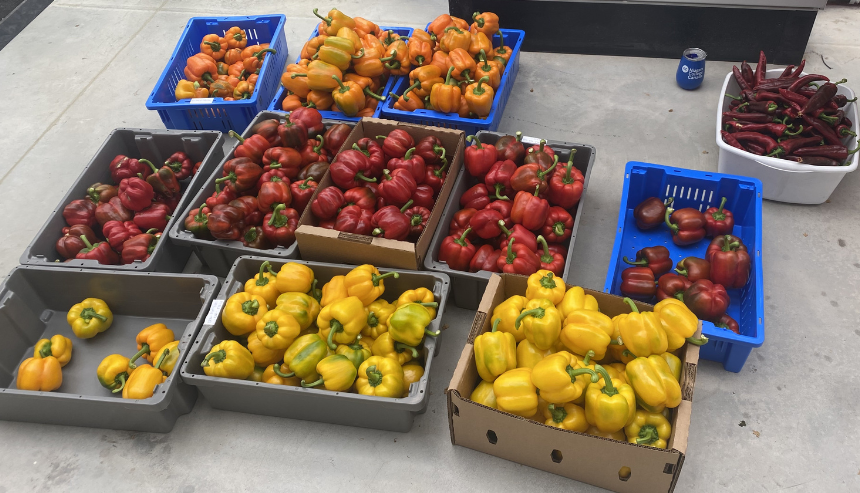One company’s growth trial to improve product quality has produced the unexpected yield of addressing food insecurity, thanks to the networking efforts of a research team at Niagara College (NC).
The Horticultural and Environmental Sciences Innovation Centre (HESIC) has been working over several months with a company testing certain aspects of bell pepper plants. Data is being collected to determine disease resistance of new bell pepper varieties developed by the vegetable breeding client, and the resulting peppers harvested are healthy and safe to consume.
So, when you are growing bell pepper plants for weeks and months at a time, what do you do with the harvest? At first, the research team, students and staff working in and around HESIC’s new applied research greenhouse were taking home the crunchy red, orange and yellow goodness. But when they could not keep up with the yield, Research Lead Ashley Paling turned to her broader network for inspiration.

